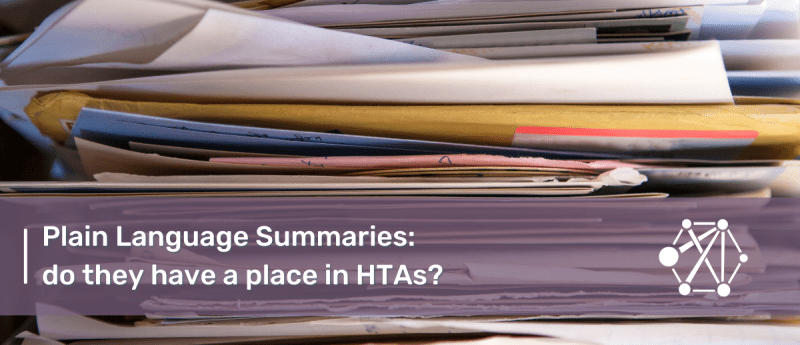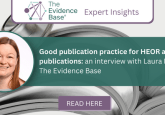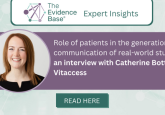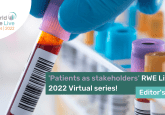Plain language summaries: do they have a place in HTAs?

Plain language summaries (PLS) are a vital part for accessibility in science. The description of scientific research, catered towards lay audiences, is improving the scientific understanding of patients, caregivers and the wider society. Plain Language Summaries of Publications (PLSPs) have already featured in various scientific publications, across a range of diseases areas, including the Journal of Comparative Effectiveness Research, and many more journals have taken steps to make their publications more accessible by including PLS.
Going forward, how can we continue to improve accessibility in science and health care, beyond the measures already taken in publishing? Do such PLS have a place in other aspects of health care, including legislation and regulatory decision making? Patients can be involved in some aspects of health technology assessments (HTAs) and health economics and outcomes research (HEOR), but inclusion of PLS could allow those unable to take part in the research to have a different degree of influence. Not only this, but there is the potential for PLS of regulator and HTA bodies’ decisions to improve understanding behind the outcomes of such meetings.
So, how necessary is it to include PLS in HTA proceedings?
Interested in learning more about PLS and patient engagement? Find out more in the Real-World Evidence Live: “Patients as stakeholders” Virtual series >>
One recent study, published in Value in Health, may explain the inclusion and development of PLS in HTAs1. This research leveraged a rapid evidence assessment (REA) on studies involving patient involvement in HTAs and in HEOR research. In conjunction with this, the team also conducted interviews with patient experts and health economic advisors, both involved in HTAs. Moreover, patients were provided with an original PLS to review and asked to create key criteria they would like to see in a PLS.
Despite the researchers noting that patient involvement is important within these areas, the results of the REA highlighted inequalities in the type of study leveraging the patient voice. In total, 80.6% of 62 publications included the patient perspective in a HTA context, meanwhile only 19.4% in HEOR.
Moreover, insights from patient experts and health economic advisors raised some common challenges that could benefit from extending the use of PLS. This included difficulties in communicating the purpose of a HTA or HEOR study to patients, alongside the technicalities of methodology and data analysis. In one sense, this can provide a ‘glass barrier’ for patients, by including them but only to a certain extent. The researchers suggested that using plain language in all aspects of research, rather than being limited to solely findings, is beneficial for patients. With this, patients could better understand the context decisions were made in, based on research findings, as the results can only provide limited information.
Since this article was published in 2020, healthcare bodies such as the NHS, the National Institute for Health Research (London, UK), EUnetHTA (Brussels, Belgium) and EUPATI (Amsterdam, The Netherlands) have published guidelines and findings concerning practical use of PLS in HTA decision-making. Alongside this, these institutions have also published PLS of original research. Some of the guidelines provided by the NHS include2:
- Be accurate, clear and concise
- Use neutral language
- Involve patients, patient representatives or members of the public in the development and/or review of your summary/feedback plans
These are only a selection of guidelines provided by the NHS regarding PLS, with eLearning modules provided. This highlights a clear dedication to putting patients at the center of HTA decision making.
The NHS is not alone in implementing PLS in HTA assessments. Healthcare Improvement Scotland’s Scottish Health Technologies Group (Glasgow, Scotland) has gone on to publish PLS of all HTA decisions made3. In addition to this, patients are involved in the process from the beginning recommendation stages. The Scottish Health Technologies Group discusses recommended investments with a national committee, including stakeholders. Together with patients, the efficacy, safety and cost effectiveness of any new treatment is considered. At the latter stages, PLS cover the evidence brought to the agency and the technology, the potential innovation, the impact on health and social care in Scotland and a critical assessment of the evidence used to make the decision.
All the work from these institutions has been powerful in providing patients with a voice, and rationale, for the decisions made by HTA agencies. Consequently, this can go on to improve the quality of healthcare provided by the sector as many viewpoints are accounted for. Given the evidence, it seems that including PLS in HTAs may be a step forward for both decision-making and patient livelihoods.
2 NHS Health Research Authority. Writing a plain language (lay) summary of your research findings. https://www.hra.nhs.uk/planning-and-improving-research/best-practice/writing-plain-language-lay-summary-your-research-findings/ [Accessed 28 January 2022]
3 Healthcare Improvement Scotland’s Scottish Health Technologies Group. Range of advice products. https://shtg.scot/what-we-do/range-of-advice-products/ [Accessed 28 January 2022]






